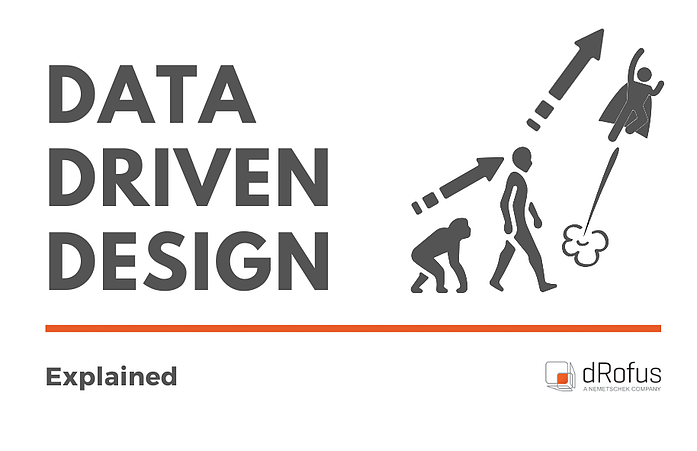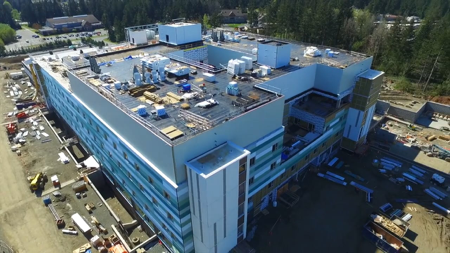
Data is all the rage; lately, it seems like everyone is talking about it, and we all need it. There are countless books written on Big Data and the Data Revolution. So how can the design and construction industry get in the data game and start to reap the rewards?
It has been proven that Data-Driven design can help a project be more efficient, successful, and operate more effectively. To understand how to take advantage of this, it is necessary first to define data. Data is defined as facts, statistics, and requirements collected for reference or analysis. So, what does this mean to us in the AECO industry? It means that data is not additional information that needs to be tracked; it merely needs to be collected and analyzed. To put it in layman’s terms, the entire process of design and construction is simply a practice of data collection and data sharing. The construction documents, equipment specifications, the fire rating of a door, the cut sheet for an air handler, and even the decision that the owner of the facility made regarding what lights to use in the lobby are types of data that should be shared with the entire project team.
Currently, this data is stored in multiple documents—paper drawings, various 3D BIMs, PDFs of specifications, notebooks on the contractor’s desk, and even saved in the mind of the facility’s lead designer. With this data in multiple locations and a myriad of formats, how do designers, contractors, and owners of the facility analyze it? The hard truth is, they don’t. They use it once and then either throw it away or archive it. This is not only an outdated way to plan, design, and construct a building, but fragmentation also leads to mistakes, productivity loss, and duplicate entries. More importantly, the owner of the facility won’t know if they are getting what they need and want.
There is a growing movement in the ACEO industry to collect this data into a single data environment, thus standardizing data, centrally locating it, and tracking it over time. The collection and tracking of the data already required for construction makes additional data collection unnecessary; the only requirement is a change in the process. Placing project and facility data in a “single source of truth” requires the entire project team, from the owner to the architect to the contractor and all team members in between, to store their project data in this one location. Doing so allows better sharing and makes it possible to analyze the data at any time in the facility's life-cycle.
The planning, construction, and operation of a facility is complicated and requires teams, consultants, and BIM tools to manage all the different data formats efficiently for the individuals consuming and presenting the project’s data. Rather than changing each team’s current workflow or introducing a new “app" that does one task, authentic data-driven design requires a comprehensive solution that can be easily used by all team members and integrate with existing design tools such as ArchiCAD, Revit, Solibri, IFC compatible BIM solutions, and Excel.

dRofus is one solution in the market that strives to do just that. dRofus has worked with and continues to collaborate with architects, engineers, contractors, and owners to develop a fully integrated solution that allows for your facilities to be planned, constructed, and operated by data and not guesswork.
dRofus in Action
North Island Hospital Project
Project Specs:
- Project Type: Healthcare Facility
- Completion: 2017
- Location: Campbell River and Comox Valley, Vancouver Island, BC
Project Description
This particular project comprises two hospitals with similar programs. The client wanted to keep them as standard and similar as possible so the staff could efficiently work between the two facilities. dRofus has allowed us to easily manage both sites in a single database, therefore standardizing our data across both sites and enabling us to run reports on both sites at the same time. This type of standardization and reporting would not be possible with Revit and Excel on their own. The level of effort to manage the room names and numbers alone would have been double without dRofus, and would quickly have become an arduous task to continually ensure that the changes on one site were also made on the other site. dRofus allows us to make changes to both sites simultaneously.
dRofus was adopted when the project was awarded, which allowed several team members to edit the project data, as well as permitting all design team members and the contractor to access the project data without opening the Revit models.

“dRofus helped maintain the evolving project program with ease and reliability.” – Tammy Adolf, Integrated Design Data Manager, Stantec
Looking Forward
The AECO industry is becoming more and more versed in BIM. As the number of applications to aid owners planning a facility grows, as well as architects, engineers, contractors, and facility managers, dRofus’ interaction and integration with these evolving solutions will grow as well. The most recent example of dRofus’ commitment to being a collaboration tool for the whole team is the current expansion to the Oslo International Airport.

The owner took the initiative to operate based on BIM. dRofus is being used during the airport’s planning and construction and during its operation. Using a single dRofus database for both the project and operations phases requires broad, open-source interoperability. There are dynamic OpenBIM connections between dRofus and over ten design and construction applications (examples include Revit MEP, Tekla, and Microstation). Concurrently, dRofus is connected to over 14 operations and control systems to facilitate uninterrupted operation during construction. It is only the beginning for dRofus’ goal of expanded interoperability, and in the upcoming months, the expansion of the dRofus API and software will facilitate even more integrations.